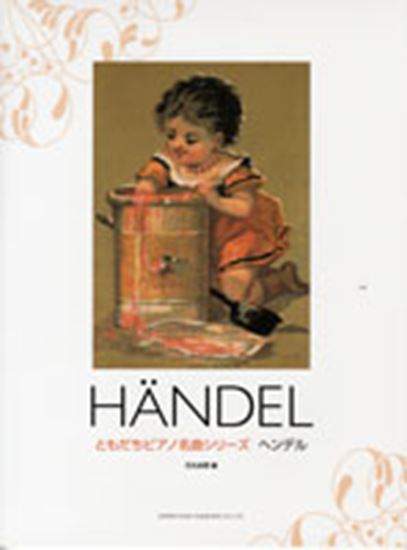Händel, Georg Friedrich : Suite HWV 437
Work Overview
Instrumentation:Piano Solo
Genre:suite
Total Playing Time:9 min 50 sec
Copyright:Public Domain
Commentary (1)
Author : Maruyama, Yoko
Last Updated: December 14, 2011
[Open]
Author : Maruyama, Yoko
HWV 437 d-moll
A suite believed to have been composed during Handel's Hamburg period (1703-05). Like HWV 436, it consists of classical dance movements, including a variation movement.
Prelude
The Prelude opens with the presentation of the tonic in the bass, and an improvisatory passage in the right hand modulates to the dominant (m. 6). Thereafter, the music flows seamlessly with imitative passages between both hands and ornamental figures in parallel tenths. This flow finally finds a brief pause at a cadence, but the key is the relative major of the tonic, indicating that it is not yet the true end of the movement. Subsequently, the music resumes its motion, leading through scales ascending from low to high registers to a tonic cadence that truly concludes the Prelude.
Allemande
The Allemande is characterized by the interplay of a motive consisting of three sixteenth notes and one quarter note. The combination of two voices engaging in this motivic interplay changes, from the two upper voices at the beginning to the upper voice and bass in the second instance, creating a rich sonic palette despite the limited material. As the upper voice begins to descend with a motive comprising leaps and repeated notes, the bass also repeats an ascending second, increasing the overall momentum towards the cadence.
Courante
The first half of the Courante features highly irregular phrase divisions. In contrast, after the repeat sign, it is written in a relatively regular structure, divided into two-measure units. From measure 33, this two-measure periodicity breaks down, and the piling up of motives creates a sense of urgency.
Sarabande
The Sarabande can effectively be understood not as a dance, but as an aria borrowing the rhythm and style of a sarabande. Only up to the second variation of this suite was written down. However, it is interpreted that subsequent variations were meant to be continued by the performer themselves. This reveals the character of the work, which presupposes practical training in improvisation.
Gigue
The final movement, the Gigue, is considered the shortest among Handel's gigues, serving to regulate the overall scale of the suite, which would otherwise be expanded by the variations. The sixteenth-note rests in the accompaniment create a crispness, forming a pleasing contrast with the Sarabande.
Movements (5)
PTNA & Partner Channel Videos(3items)
Sheet MusicView More
Scores List (19)

(株)音楽之友社

(株)全音楽譜出版社

(株)全音楽譜出版社

(株)全音楽譜出版社

(株)音楽之友社

KMP(ケイ・エム・ピー) ケイエムピー

(株)ドレミ楽譜出版社

(株)教育芸術社

(株)春秋社

(株)教育芸術社

(株)音楽之友社

(株)全音楽譜出版社

(株)共同音楽出版社

(株)学研プラス

(株)音楽之友社

(株)音楽之友社

(株)ヤマハミュージックエンタテインメントホールディングス

Musikverlag Doblinger




